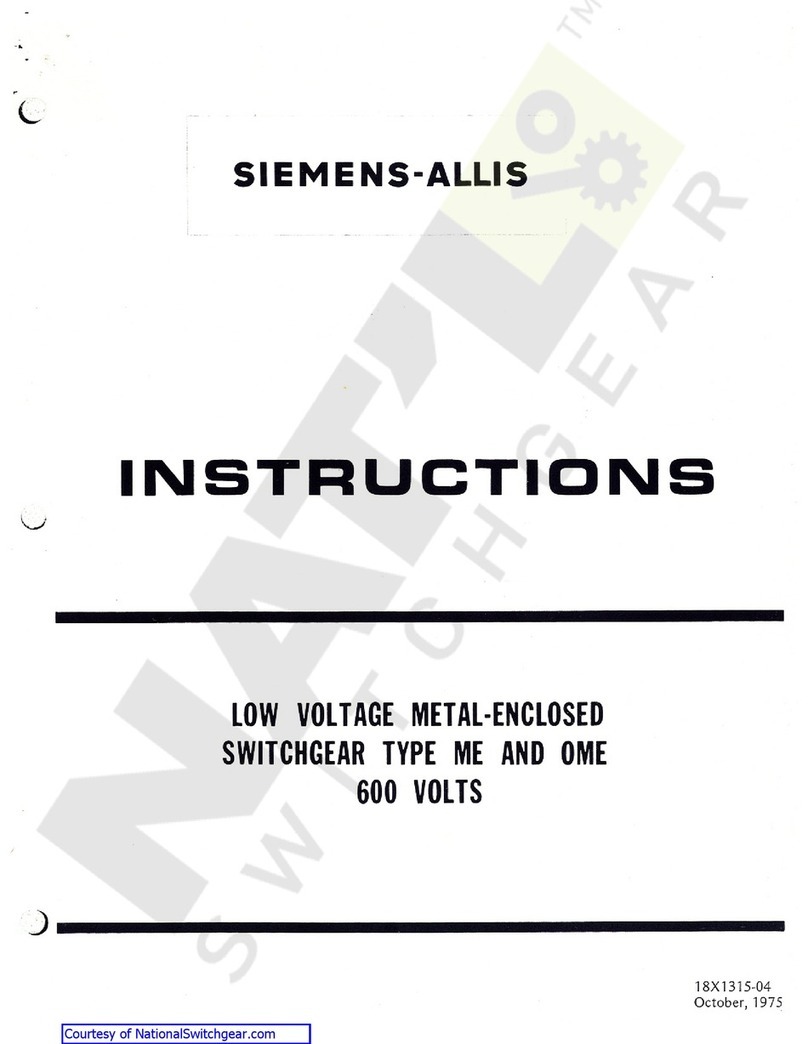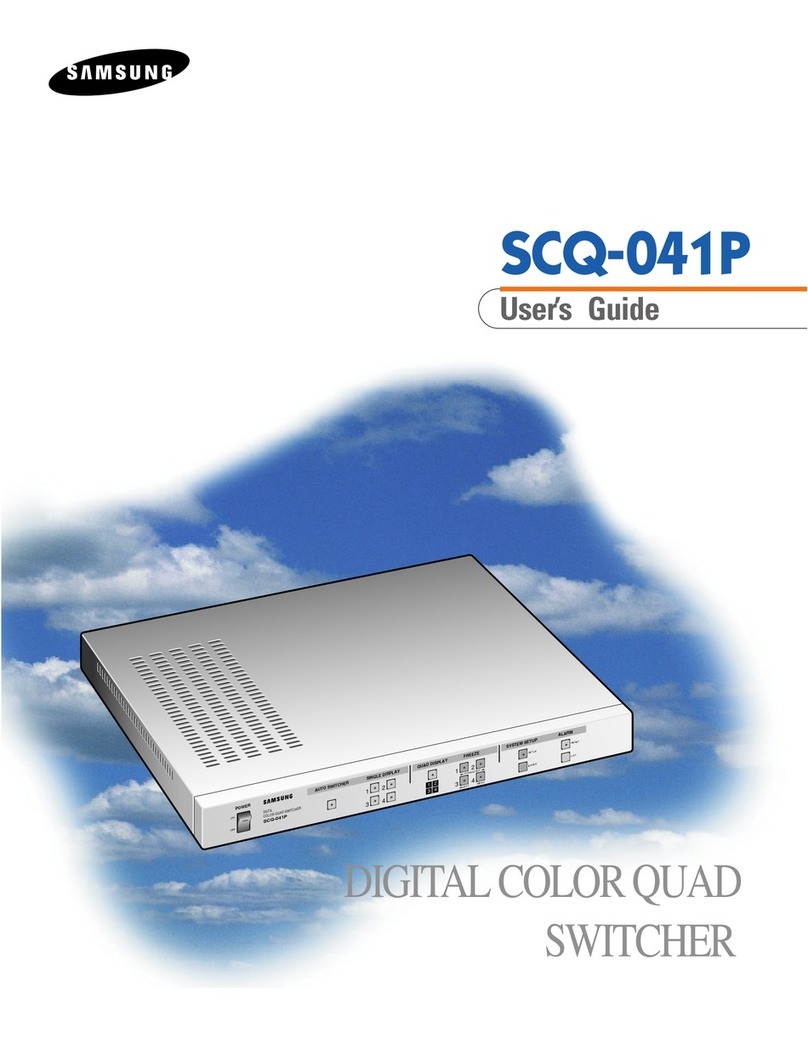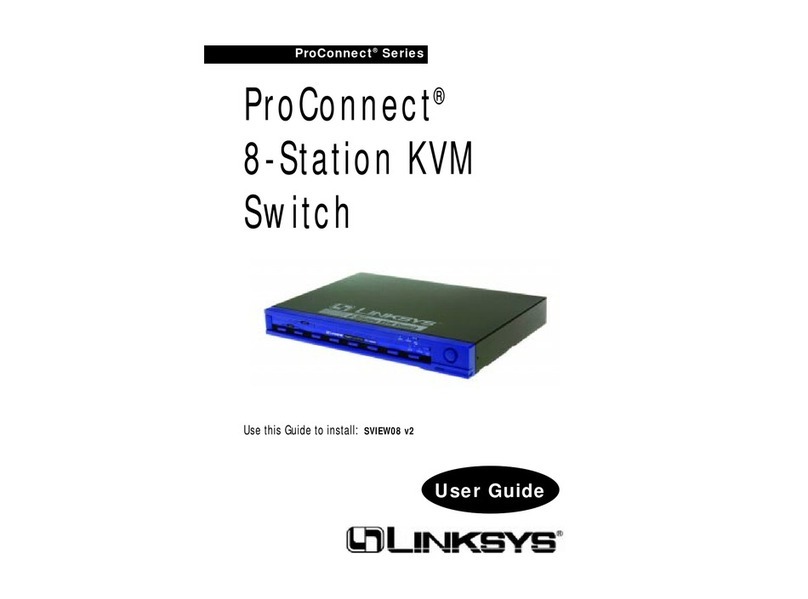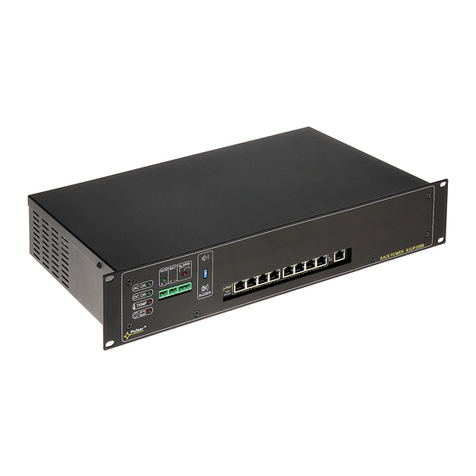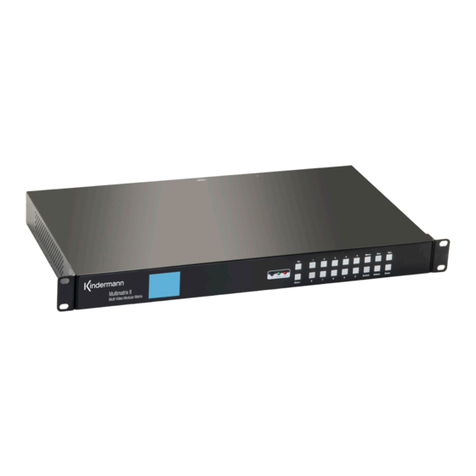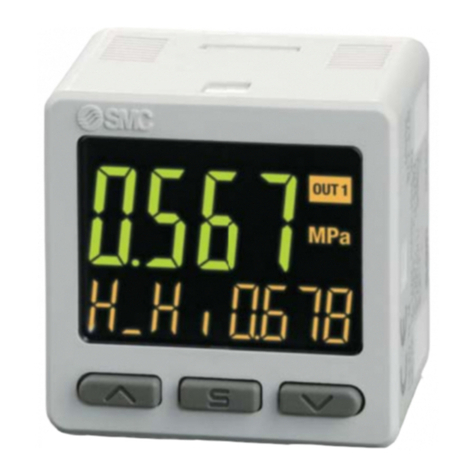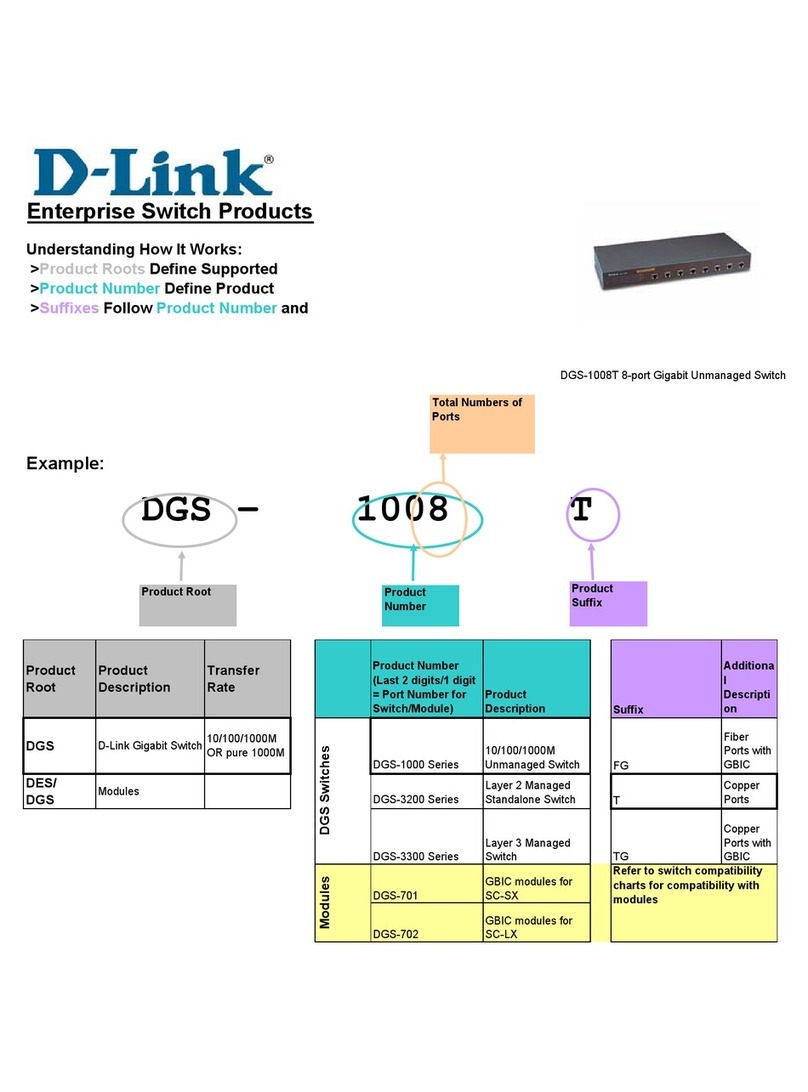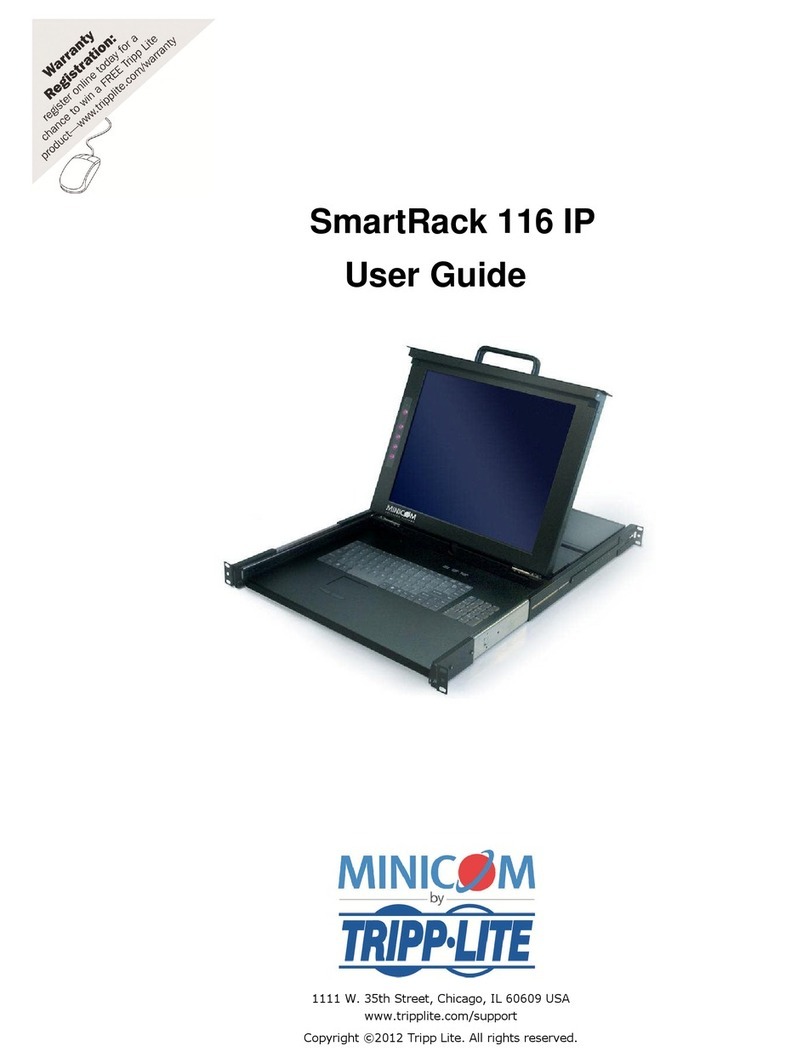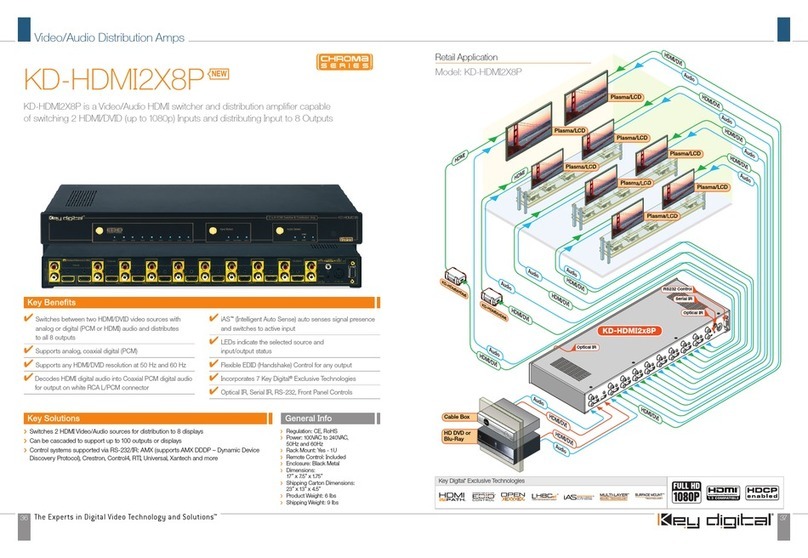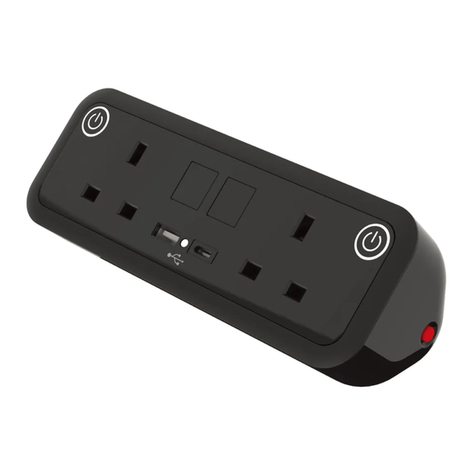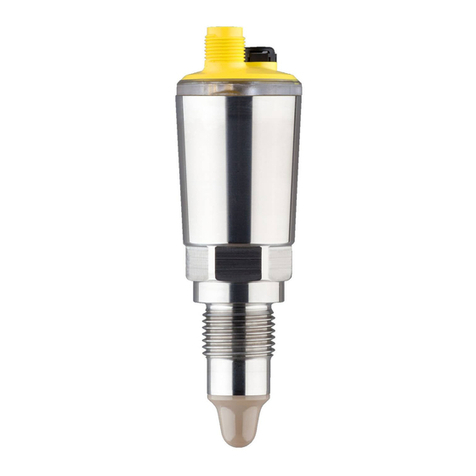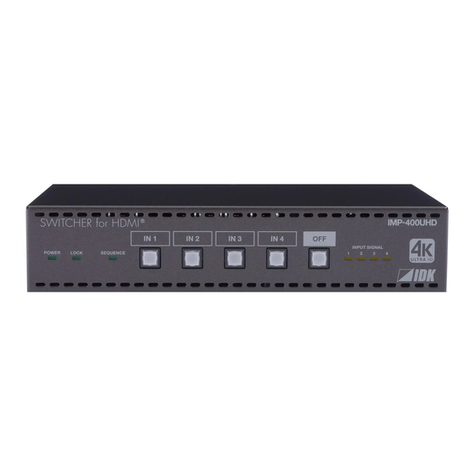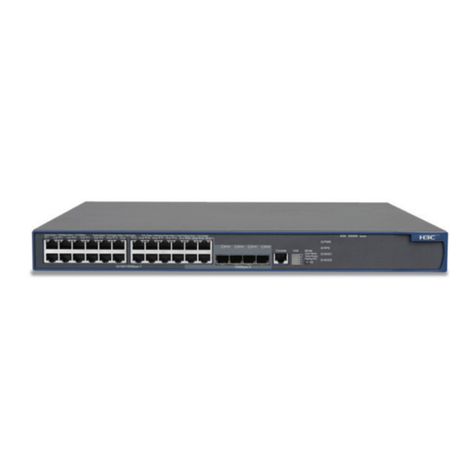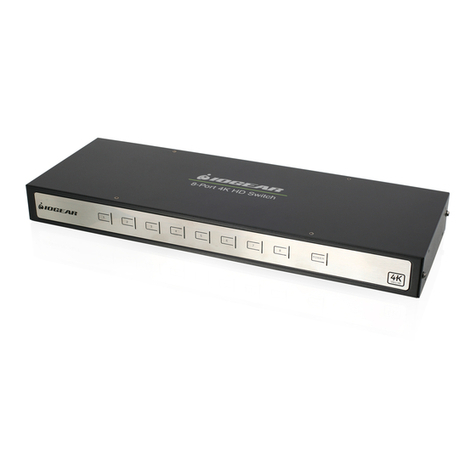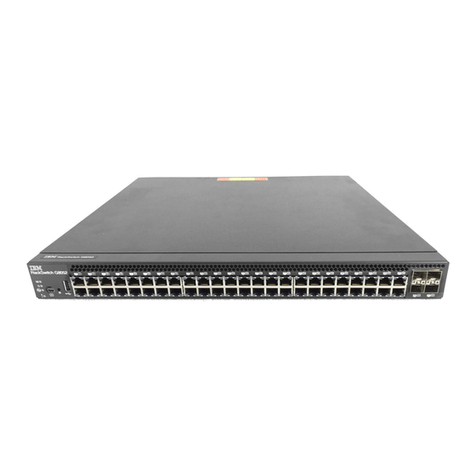Siemens-Allis LBS Series User manual

TABLE
OF
CONTENTS
Page
Page
ELECTRICAL
Conduit
Cable
Connections
Secondary
Connections
FINAL
INSPECTION
AND
TESTING
4
INTRODUCTION
GENERAL
INFORMATION
.
WARRANTY
GENERAL
DESCRIPTION
.
.
INTERLOCKING
FEATURES
APPLICATION
RECEIVING
Unloading
Shipment
Inspection
Uncrating
Storing
4
1
4
1
4
1
4
2
3
OPERATION
SEQUENCE
OF
OPERATION
—
OPERATOR
SEQUENCE
OF
OPERATION
—
SWITCH
CONTACTS
3
3
5
3
3
5
3
INSTALLATION
DRAWINGS
.
MECHANICAL
Foundation
Erection
.
.
.
MAINTENANCE
PERIODIC
INSPECTION
SWITCH
OPERATION
AND
ADJUSTMENT
.
.
.
7
TOUCH
-
UP
PAINT
.
.
..
REPLACEMENT
PARTS
7
4
4
8
4
8
4
i
The
information
contained
within
is
intended
to
assist
operating
per
-
sonnel
by
providing
information
on
the
general
characteristics
of
equipment
of
this
type
.
It
does
not
relieve
the
user
of
responsibility
to
use
sound
Practices
and
Safety
Procedures
in
the
installation
,
application
,
operation
and
maintenance
of
the
particular
equipment
purchased
.
If
drawings
or
other
supplementary
instructions
for
specific
applica
-
tions
are
forwarded
with
this
manual
or
separately
,
they
take
prece
-
dence
over
any
conflicting
or
incomplete
information
in
this
manual
.
Courtesy of NationalSwitchgear.com

INTRODUCTION
PHASE
BARRIERS
ARC
CHUTES
MAIN
STATIONARY
CONTACTS
^
MAIN
MOVING
CONTACTS
PYRO
-
SHIELD
INSULATORS
QUICK
-
BREAK
BLADE
233115
-
13
Fig
.
1
—
Type
LBS
Load
-
Break
Switch
.
baseplate
.
These
glass
polyester
insulators
are
flame
re
-
tardant
,
track
resistant
and
have
high
impact
strength
.
They
are
securely
bolted
to
the
mounting
plate
and
termi
-
nals
to
prevent
live
parts
from
rotating
.
Phase
separators
are
also
made
of
Pyro
-
Shield
insulation
.
Main
Stationary
Contacts
are
high
-
pressure
,
silver
-
to
-
copper
line
contacts
.
A
large
copper
mass
immediately
adj
-
acent
to
the
contacts
serves
to
conduct
heat
generated
by
momentary
overcurrents
away
from
the
contact
surfaces
.
Main
contacts
are
of
the
knife
-
blade
type
.
In
closing
,
the
blade
engages
with
the
stationary
contacts
ahead
of
the
contacts
inside
the
interrupter
.
This
enables
the
switch
to
close
against
fault
currents
.
Main
Moving
Contacts
are
of
high
conductivity
,
hard
drawn
copper
bars
with
rounded
edges
.
Quick
-
Break
Blades
are
made
of
silver
-
plated
phosphor
bronze
with
silver
tungsten
on
the
interrupter
tip
and
on
the
restraining
contacts
.
Silver
is
used
for
its
high
conduc
-
tivity
and
tungsten
because
of
its
high
melting
point
.
The
quick
-
break
blades
are
pivot
mounted
to
one
side
of
the
main
blades
with
a
stainless
steel
spring
mounted
parallel
to
the
main
blades
.
Arc
Chutes
are
formed
from
material
especially
selected
for
its
arc
extinguishing
properties
.
The
chute
contains
a
pair
of
silver
tungsten
tipped
restraining
contacts
which
engage
the
quick
-
break
blade
when
in
the
closed
position
.
The
necessary
spring
pressure
is
supplied
by
a
pair
of
phosphor
bronze
compression
springs
inside
the
arc
chute
.
GENERAL
INFORMATION
This
instruction
book
is
to
acquaint
the
purchaser
/
user
with
the
Siemens
-
All
is
Type
LBS
Load
-
Break
Switch
.
In
-
stallation
and
maintenance
instructions
are
provided
in
the
appropriate
sections
.
A
spare
parts
list
at
the
end
of
the
book
provides
a
list
of
the
serviceable
parts
.
WARRANTY
For
warranty
coverage
,
see
the
sales
contract
.
The
equip
-
ment
described
has
been
supplied
to
operate
in
a
system
having
a
circuit
capacity
as
specified
by
the
customer
.
If
for
any
reason
the
equipment
should
be
used
in
a
different
system
,
or
if
the
short
circuit
capacity
of
the
system
should
be
increased
,
the
momentary
rating
of
the
switch
,
the
in
-
terrupting
capacity
of
the
fuses
,
and
the
bus
capacity
should
be
checked
.
Failure
on
the
part
of
the
user
to
receive
approval
of
intended
changes
from
the
supplier
may
be
cause
of
voiding
the
warranty
.
GENERAL
DESCRIPTION
—
See
Fig
.
1
.
The
Type
LBS
Load
-
Break
Switch
is
a
manually
-
operated
,
single
-
throw
,
gang
-
operated
disconnect
with
quick
-
break
blades
and
arc
chute
interrupters
.
The
switch
employs
a
quick
-
break
and
make
mechanism
and
a
spring
-
operated
over
-
center
linkage
which
assures
positive
closing
force
and
fast
uniform
interruption
speed
.
Construction
features
of
the
basic
switch
parts
are
:
Pyro
-
Shield
Insulators
provide
switch
clearance
from
the
1
Courtesy of NationalSwitchgear.com

The
manual
,
front
-
mounted
,
operator
smoothly
and
posi
-
tively
provides
interruption
of
load
and
transformer
mag
-
netizing
currents
.
A
mechanical
interlock
prevents
the
switch
door
from
being
opened
when
switch
is
in
closed
position
.
A
safety
glass
window
allows
inspection
of
switch
blade
position
.
When
fuses
are
provided
with
a
600
amp
load
-
break
switch
in
a
single
45
inch
high
compartment
,
the
fuses
are
connected
on
the
load
side
of
the
switch
.
This
enables
per
-
sonnel
to
change
fuses
without
using
a
hot
stick
.
No
fuse
discharge
gases
are
produced
that
could
contaminate
the
switch
or
arc
chutes
.
See
Fig
.
2
.
The
600
amp
load
-
break
switch
is
mounted
in
a
compartment
32
inches
deep
,
36
inches
wide
and
45
inches
high
.
The
1200
amp
load
-
break
switch
occupies
a
com
-
partment
32
inches
deep
,
36
inches
wide
and
90
inches
high
.
Both
the
600
and
1200
amp
load
-
break
switches
are
com
-
patible
with
theSpaceMakerII
high
voltage
controller
with
or
without
bus
.
When
fuses
are
provided
on
the
bottom
of
the
switch
com
-
partment
,
this
feature
restricts
access
to
them
until
the
switch
has
been
opened
to
remove
power
from
them
.
When
Type
LBS
switches
,
mounted
in
upper
compartment
are
used
to
isolate
high
voltage
circuits
in
the
corresponding
lower
compartments
,
mechanical
interlocking
is
provided
so
the
lower
compartment
doors
cannot
be
opened
until
the
switches
in
the
upper
compartments
are
in
the
open
posi
-
tion
.
Key
interlock
systems
are
also
available
for
safety
se
-
quence
interlocking
of
compartment
doors
,
feeder
circuit
breakers
,
isolating
switches
,
other
load
-
break
switches
,
etc
.
Two
key
interlock
units
can
be
mounted
and
used
simultaneously
to
provide
increased
system
flexibility
.
A
key
interlock
mounted
in
the
top
location
on
the
operator
mechanism
permits
the
switch
to
be
locked
in
the
open
position
only
.
A
key
interlock
mounted
in
the
bottom
loca
-
tion
permits
the
switch
to
be
locked
in
either
the
open
or
closed
position
.
CAUTION
INTERLOCKING
FEATURES
Only
one
key
per
interlock
sequence
is
to
be
available
to
operating
personnel
.
The
Type
LBS
load
-
break
switch
operators
are
also
sup
-
plied
with
padlocking
provisions
.
The
load
-
break
switch
compartment
doors
are
mechani
-
cally
interlocked
so
they
cannot
be
opened
until
the
switch
is
in
the
open
position
.
Vd
*
>
»
k
.
4
-
HOl
.
lS
*
0
*
KM
C
W
OR
BOCTS
VfrOtk
.
4
-
MOLCS
FO
*
KHCHOR
BOLTS
COM
D U
I T
SPfcCCIM
TOP
O P
CUSlClt
COM
DU
IT
SPKCl
It
)
TOf
OF
CVJSICCC
32
32
-
7
^
*
4
‘
4
34
4
’
'
i
T
-
33
vS
.
Jr
-
m
-
PRIMW
1
COMDUIT
FPKC
1
L
,
/
i
*
i
»
W
«
MT
COWDu
>
T
IPKC
1
B
N
JiLJL
>
4
COUDlMY
SPKC
«
TOP
VIEW
?
tin
FLOOR
PL
KM
.
.
r
*
a
TOP
N
/
UEMi
/
FLOOR
PLkKl
I
H
IVJS
DUCT
'
MHC
.
M
*
—
r
~
"
F
‘
i
1
M
)
.
‘
li
*
»
i
r
•
r
»
4
-
a
.
$
2
-
CURR
.
TfckWSF
.
IF
SPECIFIC
©
»
4
V
Ml
HI
,
Ml
,
m
WHIN
ruses
Kut
MOT
MC
a
.
-
m
-
1
3
-
1
M
4
.
L
VM
.
-
VT
w
sptcmoDi
rir
'
I
14
KM
.
fl
.
SWITCH
*
r
SPSClFtCD
&
t
t
n
«
c
*
t
"
2
-
POT
.
TRKMSF
.
I F
sreciricb
37
S
1
DC
VII
W
5
4
32
37
-
J
SI
PC
\
/
lCW
FRONT
V
\
EW
600
AMP
1200
AMP
Fig
.
2
—
Type
LBS
Load
-
Break
Switch
Dimensions
.
2
Courtesy of NationalSwitchgear.com

Certain
applications
of
the
Type
LBS
load
-
break
switches
may
result
in
the
main
moving
contacts
as
well
as
the
main
stationary
contacts
being
energized
although
the
switch
is
in
the
open
position
.
This
condition
occurs
when
the
switches
are
used
for
bus
tie
,
multiple
incoming
line
feed
,
reversing
,
and
similar
applications
.
In
such
situations
,
complete
interlocking
protection
is
not
always
possible
;
for
often
the
existing
power
system
must
be
in
-
volved
.
Warning
signs
are
provided
on
compartment
doors
to
indicate
that
main
moving
contacts
or
both
sides
of
the
switch
may
be
energized
when
the
switch
is
in
the
open
position
.
When
such
conditions
occur
,
the
user
is
to
supply
proper
sequence
interlocking
with
existing
isolating
cir
-
cuit
breakers
or
switches
.
RECEIVING
Unloading
Lifting
angles
are
mounted
on
both
the
right
and
the
left
sides
for
safe
easy
handling
.
These
may
be
removed
after
installation
is
complete
.
Shipment
Inspection
As
soon
as
the
load
-
break
switch
is
received
,
carefully
inspect
for
damage
or
shortage
.
Examine
all
shipping
crates
before
uncrating
is
attempted
.
Do
this
to
determine
if
damage
has
occurred
in
transit
.
If
damage
to
the
crating
is
detected
,
make
a
thorough
inspec
-
tion
of
the
contents
.
Check
the
entire
shipment
against
the
packing
list
,
espe
-
cially
when
accessories
are
specified
,
to
be
sure
that
no
items
were
lost
or
omitted
.
NOTE
:
If
any
damage
or
shortage
has
occurred
,
deter
-
mine
the
extent
and
notify
the
carrier
and
your
Siemens
-
Allis
sales
office
immediately
!
Proper
notation
should
be
made
on
the
freight
bill
to
pre
-
vent
any
controversy
when
claim
is
made
.
This
notation
also
facilitates
adjustments
.
Table
1
shows
the
ratings
of
the
Type
LBS
Load
-
Break
Switch
which
are
in
accordance
with
NEMA
,
ASA
and
IEEE
standard
.
SWITCH
TYPE
VOLTAGE
FUSED
UNFUSED
2500
/
2500
/
2300
5000
5000
4160
4800
1200
Continuous
Ampere
Rating
Ampere
Interrupting
Capacity
of
Switch
Fault
Close
Amps
(
Asym
)
Momentary
Current
Amps
Max
.
Transformer
3
Phase
kva
load
KV
BIL
rating
450
450
450
600
600
600
600
1200
600
80.000
80.000
80.000
80.000
80.000
80.000
60
,
000
60
,
000
40.000
40
,
000
1500
2500
3000
60
60 60
60
60
TABLE
1
—
Type
LBS
Load
-
Break
Switch
Ratings
Uncrating
Exercise
care
in
uncrating
equipment
.
Check
all
packing
material
to
insure
that
small
parts
are
not
accidentally
thrown
away
.
Do
not
remove
any
temporary
identification
tags
or
labels
until
the
installation
is
complete
.
APPLICATION
The
manually
-
operated
Type
LBS
Load
-
Break
Switch
in
-
corporates
the
functions
of
a
disconnecting
isolator
switch
and
a
circuit
load
interrupter
.
It
is
available
with
or
with
-
out
fuses
.
When
supplied
with
fuses
,
the
current
limiting
fuses
provide
high
interrupting
capacity
,
short
circuit
pro
-
tection
and
overload
protection
in
case
of
transformer
fuses
.
Storing
If
the
load
-
break
switch
is
not
to
be
erected
immediately
,
it
should
be
stored
in
a
clean
,
dry
location
.
Before
placing
in
storage
,
inspect
and
grease
steel
surfaces
of
gears
,
drive
screws
,
etc
.
,
to
prevent
rusting
.
Protect
mechanism
,
contacts
,
etc
.
,
from
dust
and
grit
with
suitable
covers
.
Space
heaters
should
be
used
to
prevent
damage
from
condensation
.
NOTE
:
Indoor
cubicles
are
neither
weatherproof
nor
dripproof
;
they
should
be
stored
indoors
.
If
indoor
units
must
be
stored
outdoors
,
adequate
covering
must
be
pro
-
vided
.
In
addition
,
a
heat
source
of
approximately
250
watts
output
should
be
placed
inside
each
45
inch
high
compartment
to
prevent
condensation
.
Fused
load
-
break
switch
applications
are
limited
by
the
rating
of
the
fuse
.
Since
the
maximum
continuous
current
rating
of
available
fuses
is
approximately
450
amperes
,
only
the
600
amp
load
-
break
switch
is
fused
.
Typical
applications
are
:
1
.
Incoming
line
isolator
and
interrupter
.
2
.
Bus
tie
.
3
.
Emergency
transfer
.
4
.
Transformer
feeder
.
5
.
Branch
feeder
.
3
Courtesy of NationalSwitchgear.com

INSTALLATION
DRAWINGS
2
.
2
-
500
MCM
per
phase
for
one
600
amp
load
-
break
switch
mounted
in
one
90
inch
high
cubicle
(
either
in
upper
or
lower
compartment
,
the
remaining
compartment
being
blank
)
.
3
.
1
-
500
MCM
per
phase
for
two
high
arrangements
,
in
-
cluding
one
load
-
break
switch
in
a
45
inch
compartment
and
either
a
motor
starter
,
transformer
,
or
second
load
-
break
switch
in
the
other
compartment
.
Should
any
of
these
particular
limitations
be
exceeded
,
a
cable
entry
compartment
will
be
required
.
Refer
to
outline
and
wiring
drawings
for
location
of
termi
-
nals
,
cable
sizes
,
and
connections
.
Before
making
cable
connections
,
consider
phase
rotation
.
When
the
switch
is
feeding
a
transformer
,
phasing
is
traced
from
the
transformer
throat
.
Refer
to
cable
manufacturer
’
s
recommendations
for
detailed
information
.
Outline
drawings
and
wiring
diagrams
are
furnished
in
advance
to
the
customer
.
The
drawings
and
wiring
dia
-
grams
furnished
will
include
any
changes
originated
by
the
customer
during
manufacture
,
and
any
changes
or
correc
-
tions
by
the
supplier
necessary
to
insure
proper
installa
-
tion
and
operation
of
the
equipment
.
When
erecting
and
connecting
this
equipment
,
use
only
the
latest
certified
drawings
and
wiring
diagrams
supplied
.
Preliminary
drawings
may
be
changed
,
and
should
not
be
used
.
MECHANICAL
Foundation
The
load
-
break
switch
cubicles
can
be
mounted
on
a
con
-
crete
pad
or
any
type
of
floor
.
The
use
of
floor
sills
or
grouting
wrork
is
not
necessary
,
however
,
they
must
be
mounted
perfectly
level
and
continuously
supported
.
An
-
chor
bolts
must
be
installed
.
Refer
to
the
outline
drawing
.
Secondary
Connections
Secondary
wiring
,
wrhen
required
,
is
carefully
installed
and
tested
at
the
factory
.
If
special
customer
connections
are
required
,
such
as
spaceheater
connections
to
an
internal
power
source
,
wire
terminal
blocks
are
provided
as
shown
on
the
wiring
diagram
.
Erection
The
load
-
break
switch
cubicle
must
be
mounted
in
a
level
position
.
Install
shims
,
as
required
.
When
only
a
single
unit
is
being
installed
,
it
should
be
securely
anchored
when
properly
set
in
place
.
When
multi
-
ple
units
are
being
installed
,
align
the
front
of
each
unit
with
the
first
and
bolt
the
units
together
before
securely
anchoring
.
If
the
cubicle
is
not
properly
mounted
,
difficulty
may
be
encountered
with
door
swing
.
FINAL
INSPECTION
AND
TESTING
Before
the
equipment
is
placed
in
service
,
a
thorough
in
-
spection
and
test
must
be
made
.
Any
defects
that
are
found
should
be
corrected
immediately
.
The
Type
LBS
Load
-
Break
Switch
is
completely
adjusted
,
tested
,
and
inspected
at
the
factory
before
shipment
.
No
additional
adjustment
should
be
necessary
.
However
,
a
careful
inspection
should
be
made
to
be
certain
that
ship
-
ment
,
unloading
,
uncrating
,
storage
,
or
installation
have
not
resulted
in
damage
or
change
of
adjustment
.
ELECTRICAL
WARNING
Conduit
Incoming
and
outgoing
power
cables
(
and
control
,
if
any
)
may
enter
and
exit
the
load
-
break
switch
cubicles
at
the
top
or
bottom
in
any
combination
required
.
When
cable
entry
is
through
the
bottom
,
conduit
should
be
located
in
the
prescribed
area
as
shown
on
the
floor
plan
of
the
outline
drawing
.
When
cable
entry
is
through
the
top
,
conduit
should
be
located
in
the
prescribed
area
as
shown
on
the
top
view
of
the
outline
drawing
.
From
this
point
to
initial
operation
ensure
that
cir
-
cuits
are
not
energized
.
After
the
switch
is
installed
properly
in
position
and
sec
-
urely
anchored
,
proceed
as
follows
:
1
.
Remove
blocking
and
other
temporary
supports
.
2
.
Check
that
high
voltage
connections
are
properly
tightened
and
insulated
(
if
required
)
.
3
.
Check
incoming
and
outgoing
connections
for
proper
electrical
connections
,
shorts
,
and
undesired
grounds
.
4
.
Check
that
interphase
harriers
are
in
position
.
5
.
Check
that
interlocks
are
functioning
properly
.
Cable
Connections
The
cable
size
limitations
are
as
follows
:
1
.
6
-
500
MCM
per
phase
for
a
1200
amp
load
-
break
switch
.
4
Courtesy of NationalSwitchgear.com

6
.
If
fuses
arc
provided
,
see
that
they
are
properly
positioned
in
the
fuse
clips
with
the
target
facing
the
front
.
Also
check
for
correct
fuse
size
.
7
.
Inspect
complete
load
-
break
switch
assembly
for
loose
nuts
and
bolts
.
8
.
Close
the
switch
to
check
for
proper
operation
and
lubrication
.
During
the
closing
operation
,
observe
that
the
main
moving
contacts
and
quick
-
break
blade
move
freely
and
are
in
line
with
the
mai
n
slat
ionary
contacts
and
arc
chute
respectively
.
Open
and
close
switch
ten
times
to
be
sure
that
switch
is
properly
aligned
(
does
not
bind
)
.
9
.
Megger
test
the
high
voltage
circuit
to
l
>
e
sure
that
all
connections
made
in
the
field
are
properly
insulated
.
10
.
Make
dielectric
test
,
if
possible
,
on
the
high
voltage
circuit
for
one
minute
at
a
voltage
equal
to
2000
volts
plus
2
l
<
t
times
the
rated
voltage
.
CAUTION
Disconnect
all
lightning
arrestors
,
surge
capacitors
,
potential
transformers
,
and
any
other
equipment
that
may
be
damaged
by
the
test
voltage
during
this
test
.
WARNING
Keep
face
and
hands
clear
of
quick
-
acting
blade
.
OPERATION
NOTE
:
initial
position
it
cannot
be
returned
to
that
position
until
the
opening
or
closing
stroke
has
been
completed
.
The
Type
LBS
Load
-
Break
Switch
is
operated
by
the
operator
shown
in
Fig
.
3
.
To
close
or
open
load
-
break
switch
,
proceed
as
follows
:
Once
the
operating
handle
is
moved
from
its
1
.
Remove
any
padlocks
or
unlock
any
key
interlocks
used
.
SEQUENCE
OF
OPERATION
—
OPERATOR
2
.
Grasp
operating
handle
with
left
hand
.
The
operator
is
a
combination
of
a
chain
-
d
ri
ve
operator
and
a
spring
loaded
mechanism
as
shown
in
Fig
.
4
.
3
.
Grasp
knob
with
right
hand
.
To
close
switch
,
puli
knob
and
move
handle
to
a
straight
up
position
.
As
the
handle
is
moved
the
main
moving
contacts
start
to
move
and
crank
compresses
spring
in
operator
assembly
.
When
crank
is
over
center
,
spring
takes
over
and
closes
switch
independent
of
the
speed
of
the
handle
.
Re
-
verse
motion
of
handle
to
open
switch
.
4
.
Pull
knob
and
move
operating
handle
through
complete
stroke
in
one
continuous
motion
.
-
KEY
INTERLOCK
POSITION
PADLOCK
HOLE
SEQUENCE
OF
OPERATION
—
SWITCH
CON
-
TACTS
As
switch
is
closed
,
main
current
carrying
contacts
engage
prior
to
the
quick
-
break
blade
contacts
inside
arc
chute
.
This
reduces
the
possibility
of
damage
or
welding
of
the
quick
-
break
blades
if
switch
is
closed
on
rated
or
fault
currents
.
As
switch
closes
fully
,
the
quick
-
break
blade
passes
between
,
and
is
restrained
by
the
stationary
arcing
contacts
within
the
arc
chute
.
As
closing
is
completed
,
the
current
is
shunted
through
the
main
contacts
with
very
little
passing
through
the
quick
-
break
blade
.
Fig
.
5
shows
the
working
components
of
the
switch
.
See
Fig
.
6
.
As
switch
is
opened
,
main
moving
contact
opens
first
and
quick
-
break
blade
is
held
back
by
the
restraining
contacts
.
When
main
moving
contact
is
at
a
set
distance
from
the
main
stationary
contact
,
the
quick
-
break
blade
is
stopped
from
further
angular
movement
at
the
pivot
point
,
causing
it
to
snap
rapidly
out
through
the
arc
chute
.
The
resulting
arc
is
elongated
and
extinguished
within
the
arc
chute
.
Both
the
main
moving
contact
and
the
quick
-
break
blade
then
move
to
full
open
position
,
easily
visible
through
inspection
window
.
KNOB
KEY
INTERLOCK
POSITION
PADLOCK
HOLE
OPERATING
HANDLE
233143
-
3
Fig
.
3
—
Typical
Operator
.
5
Courtesy of NationalSwitchgear.com

MAINTENANCE
WARNING
In
the
opening
operation
of
the
load
-
break
switch
(
14
,
Fig
.
7
)
,
the
quick
-
break
blades
(
13
)
should
remain
locked
with
stationary
arcing
contacts
(
18
)
in
position
until
stop
pin
(
15
)
of
main
movable
contact
(
16
)
acts
on
quick
-
break
blade
spring
housing
(
17
)
.
Continued
opening
movement
of
the
main
movable
contacts
will
draw
the
quick
-
break
blades
(
13
)
through
their
stationary
arcing
contacts
(
18
)
to
com
-
plete
a
quick
opening
of
the
circuit
due
to
the
spring
(
19
)
action
on
the
quick
-
break
blades
(
13
)
.
The
main
movable
contacts
should
be
opened
approximately
one
inch
before
the
quick
-
break
blades
disengage
.
If
any
of
the
quick
-
break
blades
(
13
)
should
start
to
move
with
the
initial
movement
of
the
main
movable
contact
(
16
)
,
or
if
they
should
start
to
withdraw
from
the
stationary
contacts
(
18
)
before
stop
pin
(
15
)
starts
to
act
on
spring
housing
(
17
)
this
means
that
the
quick
-
break
blades
(
13
)
have
not
penetrated
sufficiently
into
the
stationary
arcing
contacts
(
18
)
.
This
is
rectified
by
lengthening
connecting
rods
(
20
)
through
adjustment
of
eye
bolts
(
31
)
.
If
the
quick
-
break
blades
(
13
)
continue
to
withdraw
from
their
stationary
arcing
contacts
(
18
)
before
stop
pin
(
15
)
has
acted
upon
spring
housing
(
17
)
,
then
check
for
missing
compression
spring
(
22
)
,
on
stationary
arcing
contacts
(
18
)
.
Quick
-
break
blades
must
make
and
break
at
approximately
the
same
time
.
Disconnect
switch
from
all
external
power
sources
before
performing
any
inspection
or
maintenance
op
-
eration
.
PERIODIC
INSPECTION
Thorough
inspection
at
periodic
intervals
is
important
to
satisfactory
operation
.
Conditions
affecting
maintenance
are
weather
and
atmosphere
,
experience
of
operating
per
-
sonnel
,
and
special
operation
requirements
.
The
frequency
of
inspection
and
maintenance
will
,
therefore
,
depend
on
installation
conditions
and
can
be
determined
only
by
ex
-
perience
and
practice
.
It
is
recommended
,
however
,
that
the
following
inspections
be
performed
at
least
once
a
year
or
after
100
operations
of
a
600
amp
switch
or
20
operations
of
a
1200
amp
switch
.
More
frequent
inspection
may
be
necessary
if
local
conditions
require
.
1
.
Inspect
interior
for
dust
and
dirt
accumulation
.
Remove
dust
from
all
parts
.
2
.
Inspect
bus
bars
and
cable
connections
to
see
that
they
are
in
proper
condition
.
If
they
show
signs
of
having
overheated
,
check
for
poor
or
loose
connections
or
loose
connections
or
for
overloads
.
3
.
Check
condition
1
of
main
contacts
,
quick
-
break
blades
and
arc
chute
.
Replace
any
worn
or
damaged
parts
.
4
.
Check
arc
chutes
for
loose
bolts
and
retighten
if
needed
.
Check
fastening
of
switch
shaft
assembly
.
Apply
grease
to
parts
requiring
lubrication
.
5
.
Apply
high
temperature
lubricant
(
silicon
or
molyb
-
denum
based
)
to
contact
component
surfaces
subject
to
abrasion
.
Hydrocarbon
based
grease
may
be
applied
,
very
sparingly
to
bearings
,
linkages
,
sprockets
and
drive
chains
not
directly
associated
with
current
carry
-
ing
components
.
6
.
Examine
and
test
all
safety
interlocks
.
This
equipment
is
designed
to
give
top
performance
when
installed
in
normal
indoor
locations
(
and
in
normal
outdoor
locations
when
so
specified
)
.
When
abnormal
conditions
—
such
as
corrosive
atmospheres
—
are
encountered
,
special
precautions
must
be
taken
to
minimize
these
effects
.
The
quick
-
break
blade
should
he
centered
in
the
slot
of
the
arc
chute
and
have
Vs
in
.
movement
to
the
bottom
of
the
stationary
contact
.
If
hlade
is
not
centered
,
then
loosen
the
two
screws
(
10
)
holding
jaw
contact
and
arc
chute
assembly
(
11
)
to
insulator
(
12
)
.
Close
switch
slowly
,
while
lining
up
arc
chute
(
11
)
with
quick
-
break
blade
(
13
)
.
When
correct
alignment
has
been
achieved
,
tighten
the
two
screws
(
10
)
.
The
entry
and
travel
of
quick
-
break
blade
into
and
through
arc
chute
should
occur
freely
.
Hinge
contact
and
stationary
contact
must
be
in
line
.
Main
moving
contact
must
make
contact
on
all
four
surfaces
of
the
stationary
contact
.
To
check
contact
pressure
of
main
switch
contact
at
hinge
contact
(
23
)
,
slack
off
nut
(
25
)
until
drag
is
sufficient
to
harely
permit
turning
of
the
clamping
bolt
by
hand
,
then
tighten
nut
(
25
)
,
one
turn
.
(
Must
not
exceed
one
turn
.
)
To
check
pressure
at
jaw
contact
,
slack
off
nut
(
26
)
until
drag
is
sufficient
to
barely
permit
turning
of
the
clamping
bolt
by
hand
,
then
tighten
nut
(
26
)
one
turn
.
(
Must
not
exceed
one
turn
.
)
Main
movable
contact
must
make
contact
on
a
%
i
nch
minimum
of
the
contact
surface
of
the
main
stationary
contacts
.
SWITCH
OPERATION
AND
ADJUSTMENT
The
checking
and
adjustment
of
contact
operation
must
be
undertaken
with
the
over
center
spring
disengaged
and
the
incoming
power
de
-
energized
.
The
spring
action
is
disabled
by
removi
ng
the
cotter
pin
and
pin
which
fastens
the
spri
ng
and
clevis
to
the
crank
(
Fig
.
4
)
.
WARNING
Keep
face
and
hand
clear
of
quick
-
hreak
blades
.
7
Courtesy of NationalSwitchgear.com

Fig
.
7
—
Switch
Operation
and
Adjustment
.
ready
for
use
,
is
supplied
with
each
order
for
touching
up
any
scratches
,
etc
.
made
during
installation
.
Inspect
the
surface
and
retouch
where
necessary
.
Paint
is
furnished
in
spray
-
on
,
one
-
pint
cans
.
Space
heaters
,
when
specified
are
controlled
by
thermos
-
tats
mounted
inside
the
cubicle
.
The
thermostats
are
fac
-
tory
set
to
cut
in
and
out
at
a
definite
temperature
.
When
humid
conditions
exist
,
be
sure
to
provide
power
to
these
heaters
well
in
advance
of
energizing
the
equipment
to
insure
that
the
insulation
is
dry
.
QUANTITY
PER
PART
NUMBER
DESCRIPTION
SWITCH
REPLACEMENT
PARTS
3
Stationary
Contact
(
upper
)
Stationary
Contact
(
lower
)
Arc
Chute
Assembly
Moving
Contact
Assembly
600
A
(
Includes
movable
arcing
Contact
)
Operating
Link
Contact
Lubricant
25
-
205
-
109
-
002
25
-
205
-
109
-
004
18
-
375
-
793
-
501
18
-
376
-
028
-
502
The
following
list
of
parts
represents
the
major
components
of
the
load
-
break
switch
subject
to
wear
.
The
number
of
operations
and
the
severity
of
interruption
are
the
factors
to
be
considered
when
determining
the
quantity
of
spare
parts
for
stocking
.
3
3
3
1200
A
Consult
Factory
25
-
105
-
931
-
501
15
-
171
-
370
-
002
3
TOUCH
-
UP
PAINT
3
Matching
paint
,
one
pint
per
three
units
,
thinned
and
AR
8
Courtesy of NationalSwitchgear.com
Other Siemens-Allis Switch manuals



